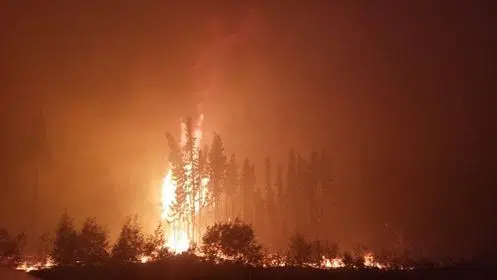
No ‘let it burn’ wildfire policy: Wildfire Management
Provincial wildfire officials said categorically there is no ‘let it burn’ policy in Saskatchewan.
Indigenous leaders have been critical about a policy that, as they see it, compromises their Treaty right to fish and gather. They feel their resources are being left to the mercy of fires like the ones that got close to Pelican Narrows in September. There are also concerns about smoke compromising residents’ health.
But Steve Roberts from Wildfire Management said every wildfire is tackled based on various priority criteria.
“There is no ’let it burn’ policy in Saskatchewan,” Roberts said. “Every fire is assessed and every fire has decisions on actions to best manage it based on the threats it poses.”


